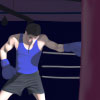
Spiders are perhaps one of the most fascinating creatures in the animal kingdom due to their intricate webs and unique behavior. From their hunting techniques to their intricate mating rituals, there is much to explore when it comes to spider biology. In this article, we will dive deep into the world of spiders and uncover some of their most interesting traits.
The Anatomy of a Spider
Spider anatomy is quite unique. They have two main body parts, the cephalothorax and the abdomen, which are connected by a narrow waist. Spiders have four pairs of legs and multiple eyes, arranged in varying patterns depending on the species. They also have fangs that they use to inject venom into their prey.
Spider Webs: Masterpieces of Engineering
Spiders are renowned for their ability to weave intricate webs, which serve as both a tool for hunting and a means of protecting their eggs. These webs are made of silk, which is produced in specialized glands located in the spider's abdomen. The silk is incredibly strong and flexible, allowing the spider to create webs that can trap insects many times larger than their own size. Spider webs are also incredibly elastic, which helps to prevent them from breaking in the wind.
Unique Hunting Techniques
Spiders have developed a wide variety of hunting techniques, each tailored to their specific prey. Some spiders actively hunt their prey, while others sit and wait for it to come to them. Some will even use mimicry to lure unsuspecting prey into their clutches. Once caught, the spider will typically inject venom into the prey to paralyze it before consuming it.
Mating and Reproduction
Spiders have a variety of unique mating rituals, which can vary greatly depending on the species. In some cases, the male will present a gift of food to the female as part of the courtship process. Once mating is complete, the female will often lay eggs in a cocoon, which she will protect until they hatch. Some spider species will even carry their young on their back until they are large enough to fend for themselves.
















